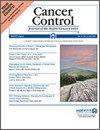食管鳞状细胞癌病理 T0 患者接受新辅助化疗后的肿瘤治疗效果
IF 2.5
4区 医学
Q3 ONCOLOGY
引用次数: 0
摘要
背景和目的 研究新辅助化放疗(NCRT)后原发肿瘤病理完全缓解(pCR)(ypT0)的食管鳞状细胞癌(ESCC)患者的肿瘤预后。结果最终共有118名患者参与了这项研究。92例患者的原发肿瘤和淋巴结达到pCR(ypT0N0),26例患者的52个淋巴结有残余转移性疾病(ypT0N+)。在有残留肿瘤的 52 个淋巴结中,有 45 个是腹部淋巴结。淋巴结阳性多见于肿瘤位于食管下三分之一处的患者。整个研究组的1年、3年和5年总生存率(OS)分别为96.5%、79.5%和77.1%,1年、3年和5年无病生存率(DFS)分别为90.5%、76.8%和69.0%。多变量分析显示,pN分级是OS和DFS的独立预测因素(P < 0.05),而性别和cT分级也是DFS的独立预后因素(P < 0.05)。本文章由计算机程序翻译,如有差异,请以英文原文为准。
Oncologic Outcome of Patients With Pathologic T0 Esophageal Squamous Cell Carcinoma After Neoadjuvant Chemoradiotherapy
Background and ObjectiveTo investigate the oncologic outcomes of patients with esophageal squamous cell carcinoma (ESCC) who have achieved a pathologic complete response (pCR) of the primary tumor (ypT0) after neoadjuvant chemoradiotherapy (NCRT).MethodsPatients with thoracic ESCC who underwent scheduled NCRT followed by surgery at our hospital between January 2010 and December 2022 were retrospectively analyzed. Only patients with ypT0 disease were enrolled in this study.ResultsA total of 118 patients were ultimately enrolled in this study. Ninety-two patients achieved pCR in the primary tumor and lymph nodes (ypT0N0), while 26 patients had residual metastatic disease in 52 lymph nodes (ypT0N+). Forty-five of the 52 lymph nodes with residual tumors were abdominal lymph nodes. Positive lymph nodes were more often observed in patients with tumors located in the lower third of the esophagus. The 1-, 3-, and 5-year overall survival (OS) rates for the entire study group were 96.5%, 79.5%, and 77.1%, and the 1-, 3-, and 5-year disease-free survival (DFS) rates were 90.5%, 76.8%, and 69.0%, respectively. According to multivariate analyses, pN classification was an independent predictor of both OS and DFS ( P < 0.05), while sex and cT classification were also found to be independent prognostic factors for DFS ( P < 0.05).ConclusionsResidual nodal metastatic disease in patients with ypT0 ESCC after NCRT was more often found in the abdominal lymph nodes. pN classification was an independent predictor of both OS and DFS for ypT0 ESCC patients after NCRT.
求助全文
通过发布文献求助,成功后即可免费获取论文全文。
去求助
来源期刊

Cancer Control
ONCOLOGY-
CiteScore
3.80
自引率
0.00%
发文量
148
审稿时长
>12 weeks
期刊介绍:
Cancer Control is a JCR-ranked, peer-reviewed open access journal whose mission is to advance the prevention, detection, diagnosis, treatment, and palliative care of cancer by enabling researchers, doctors, policymakers, and other healthcare professionals to freely share research along the cancer control continuum. Our vision is a world where gold-standard cancer care is the norm, not the exception.
 求助内容:
求助内容: 应助结果提醒方式:
应助结果提醒方式:


